Fresh mushrooms can last in the fridge for up to 7 days. After you cook them, you can store them in the fridge for another 3 to 5 days. Whole mushrooms will stay fresh for longer than sliced ones.
In this article, I’ll explain how long mushrooms last for, and share several storage methods and strategies for maximizing their freshness.
We’ll talk about refrigerating, freezing, dehydrating, canning, and pickling mushrooms, and how long you can expect mushrooms to last for each option. I’ll also let you know how to tell if a mushroom has gone bad, to help you prevent getting ill from eating spoiled shrooms.
How Long Do Mushrooms Last For?
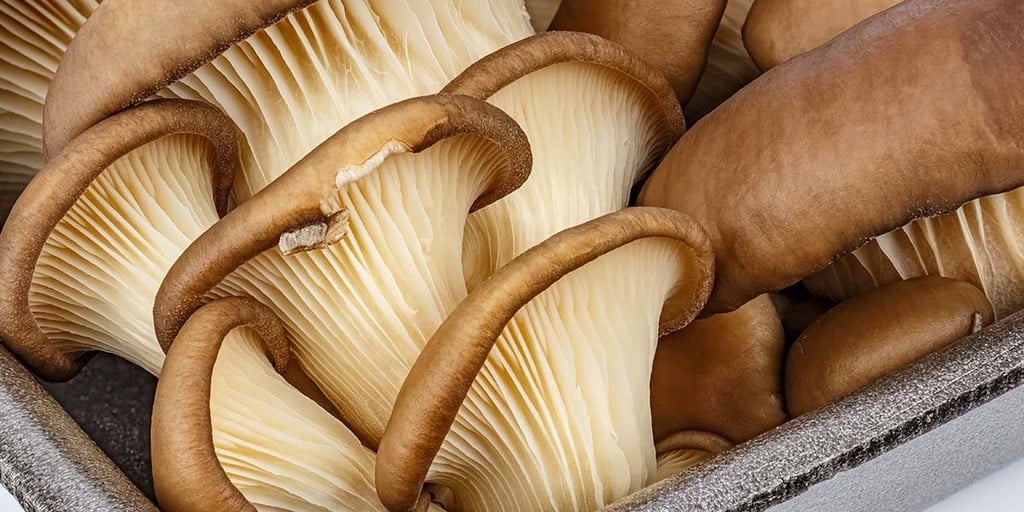
Mushrooms are an extremely nutritious and delicious addition to any meal. But unfortunately, they also don’t stay fresh for very long after you bring them home from the grocery store.
To make things worse, mushrooms don’t often have a sell-by or best before date on them, since they produce. So you’ll have to judge their freshness for yourself.
Both when purchasing them, and also evaluating whether they’re still fresh to use at home.
A good rule of thumb is that fresh mushrooms can last in the refrigerator for about a week. Depending on the variety, the actual amount of time might be anywhere from four days all the way up to ten days.
Once you cook your mushrooms, their shelf life will be extended by another three to five days.
There are ways of extending the life of your mushrooms if you can’t use them within this timeframe.
Freezing your mushrooms will allow them to last 2 to 12 months in your freezer. Dried mushrooms will last for up to a year. And pickled or canned mushrooms will last for 4 to 6 months if kept refrigerated.
Keep in mind that these are just estimates. Use your judgment to determine if your mushrooms have spoiled using the information later in this article.
How To Store Mushrooms For Optimal Freshness

How long your mushrooms will stay fresh depends a lot on which of the different methods you choose to store them.
There’s a lot more besides just taking them out of your shopping bag when you get home and tossing them in the fridge.
Here I’ll go over some of the different ways you can use to extend the useful life of your mushrooms.
Depending on how much extra work you want to put in, you can make your mushrooms last for a couple of extra days to as long as a year!
Leaving Your Mushrooms At Room Temperature
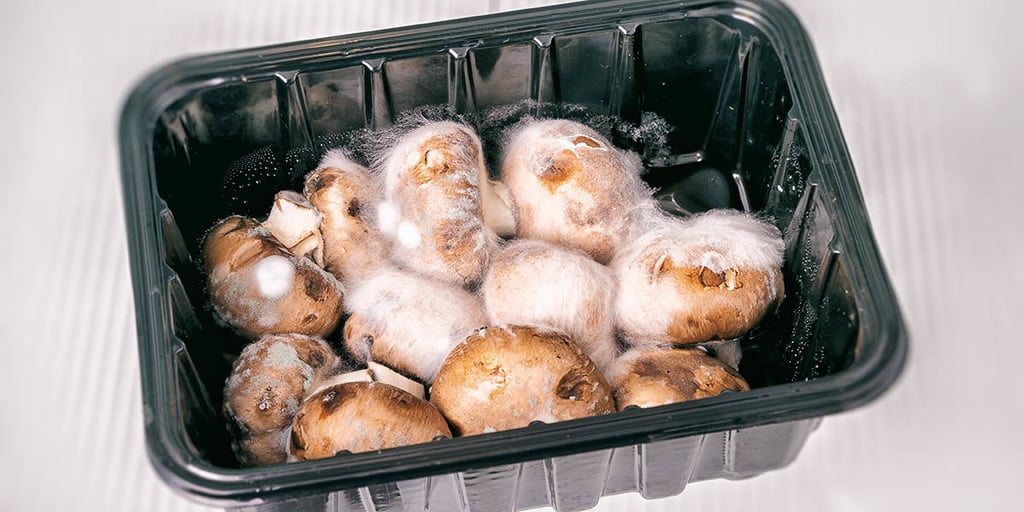
Leaving your fresh mushrooms out on the counter is the worst option when it comes to keeping them fresh. Most mushrooms will only stay fresh for about a day at room temperature before they start to brown and turn slimy.
Particularly if they were already sitting at the store for a day or two before you bought them.
On especially hot and humid days, mushrooms might only stay fresh at room temperature for around 12 hours.
Room temperature isn’t a good way to store fresh mushrooms, since those temperatures can make them susceptible to developing bacteria.
After several hours of sitting out, mushrooms can start to become unsafe to eat.
Refrigerating Your Mushrooms
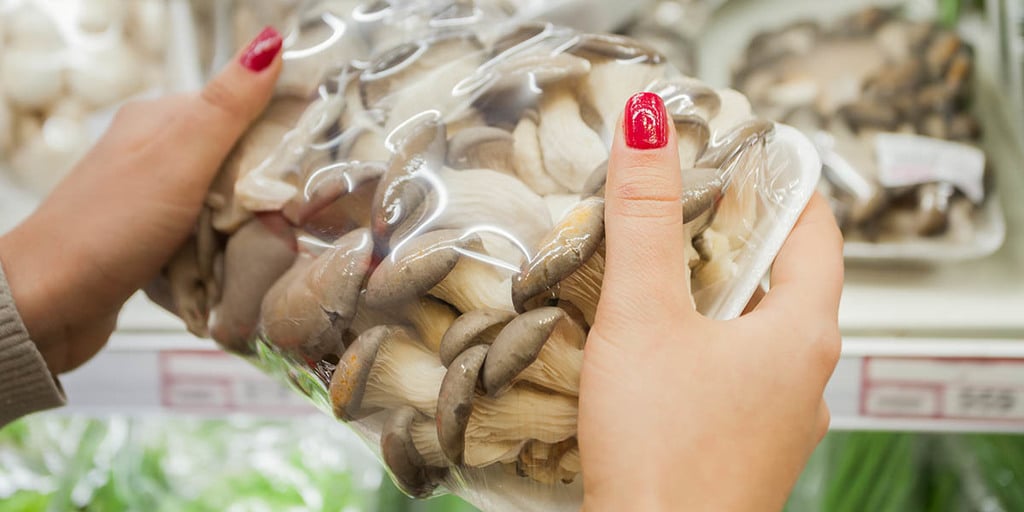
Fresh mushrooms do best when stored in the refrigerator. Lower temperatures will help to slow their decay and prevent bacteria from building up on them.
It’s the best and easiest option for short-term storage of mushrooms.
Always opt for whole mushrooms if possible, and only slice them when you’re ready to cook them. Whole mushrooms will last longer than sliced in the refrigerator.
Don’t wash your mushrooms before you put them in the refrigerator. They will soak up extra water, and the excess humidity will cause them to spoil faster.
If you need to wash your mushrooms, do it just before cooking them.
Although simply scrubbing them with a mushroom brush to remove any leftover dirt or debris is best.
Speaking of humidity, don’t store your mushrooms in the crisper drawer of your fridge either.
These drawers are great for things like lettuce or fresh herbs that wilt easily, but they’re the worst spot in your fridge to store your mushrooms.
When you’re putting mushrooms in the fridge, try to keep them away from any especially smelly or flavorful foods.
Mushrooms are very porous and easily absorb smells and tastes from other things around them. So you don’t want to put them right next to things like fish or onions.
Also take care not to pile other food on top of your mushrooms. They can’t support much weight, so treat them as fragile as a loaf of bread.
Not only will squished mushrooms look less appetizing, but they won’t stay fresh for as long either.
What Kind of Container Should You Store Mushrooms In?
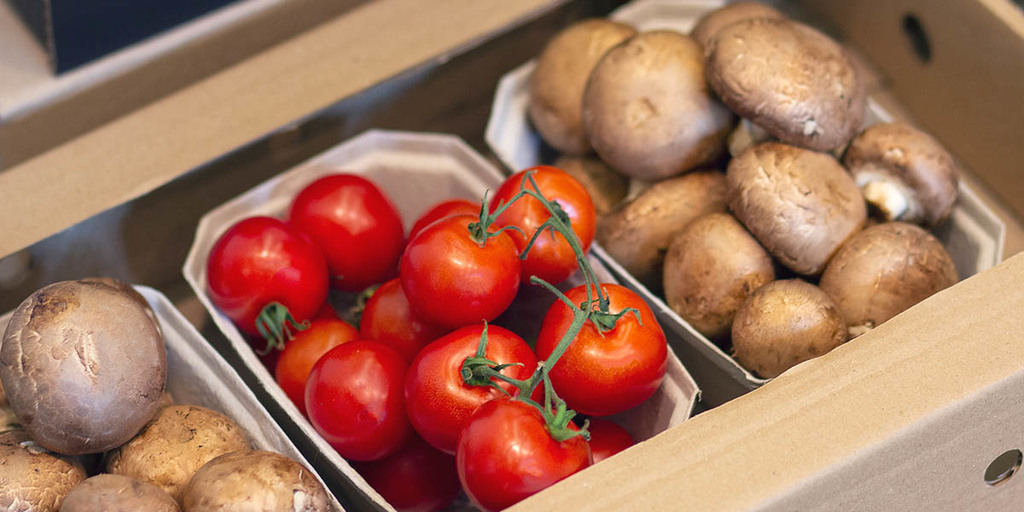
Ideally, mushrooms should have a breathable container that lets any extra moisture escape. If they get too humid or water starts to build up in the container, they’ll spoil quicker.
If you bought your mushrooms in a tray with plastic wrap on it, you can put it in the fridge in that. It’s just wise to poke a few holes in the plastic wrap first though to let the mushrooms breathe.
If you’re lucky, you might even get mushrooms that come in a package that’s perforated already.
If you want to provide a better container for your mushrooms, a brown paper bag is a good choice.
It will allow the mushrooms to breathe but keep the overall moisture levels even, and it will prevent the mushrooms from absorbing extra smells from inside your fridge.
Leaving your mushrooms sitting open in the fridge isn’t advised. Too much airflow can be just as bad as too little, and causes mushrooms to dry out and wrinkle prematurely.
Buying or Making Canned Mushrooms
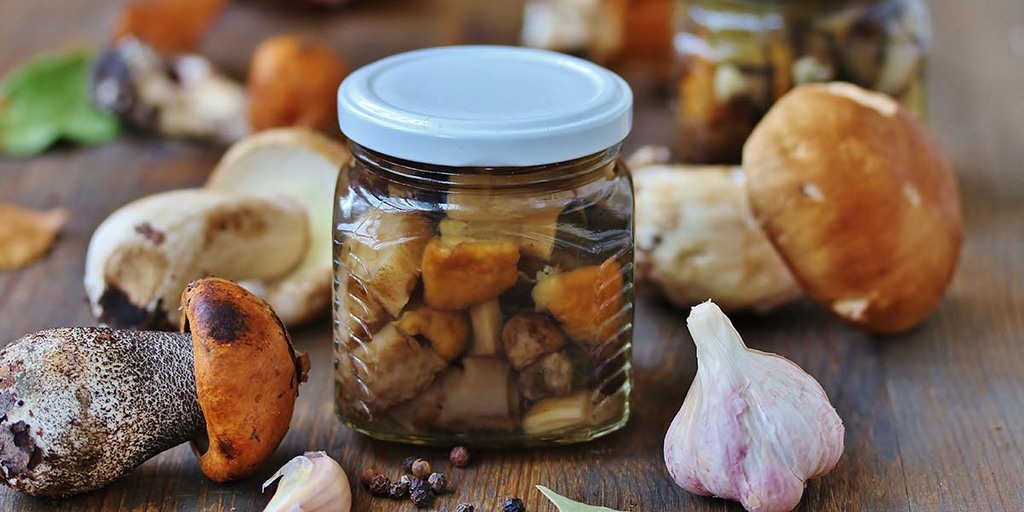
The one exception to storing mushrooms at room temperature is if you buy them canned. In that case, you can leave them in your cupboard for a very long time without any issues.
Most cans of mushrooms will have a best before date of about three to five years from when you buy them.
The downside is that canned mushrooms don’t have the same texture or freshness that you get when buying fresh mushrooms from the produce department. But they also tend to be cheaper as well.
Once you open your canned mushrooms, it’s an entirely different story. Like fresh mushrooms, they’ll only be able to sit at room temperature for a few hours before bacteria growth starts to make them unsafe to eat.
So always refrigerate any unused portions of canned mushrooms immediately after opening.
In the fridge, canned mushrooms will last for an additional three or four days after you open them.
If you have a pressure cooker, you can even try canning your own mushrooms.
Although they need to be heated to a temperature of 250 degrees F or more to prevent botulism. Regular water bath canning isn’t recommended for preserving mushrooms, as botulism spores can survive regular boiling temperatures.
Dried Mushrooms
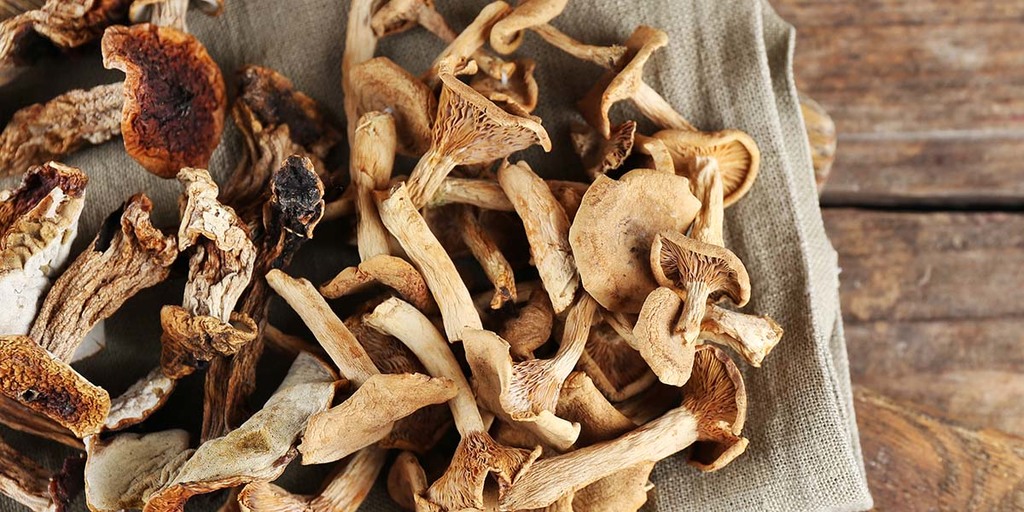
If you mostly use mushrooms for soups, stews, or sauces and don’t care as much about the texture, dried mushrooms can be a great choice.
You can buy a container of mushrooms that have already been dried from your grocery store, or you can buy fresh mushrooms and dry them yourself if you’ve got a food dehydrator.
Dried mushrooms can last a year or more at room temperature, as long as they’re stored in an airtight container in a cool and dark place that isn’t too humid.
You’ll know they’re starting to lose their effectiveness when they start to loose their mushroom smell.
Having some dried mushrooms in your kitchen is great, because you never have to worry if you have mushrooms for a recipe or run out to buy fresh ones. You’ll always have quick access to mushrooms in your cupboard.
To rehydrate dried mushrooms, you just have to add boiling water to them and wait 20 or 30 minutes for them to rehydrate.
Frozen Mushrooms
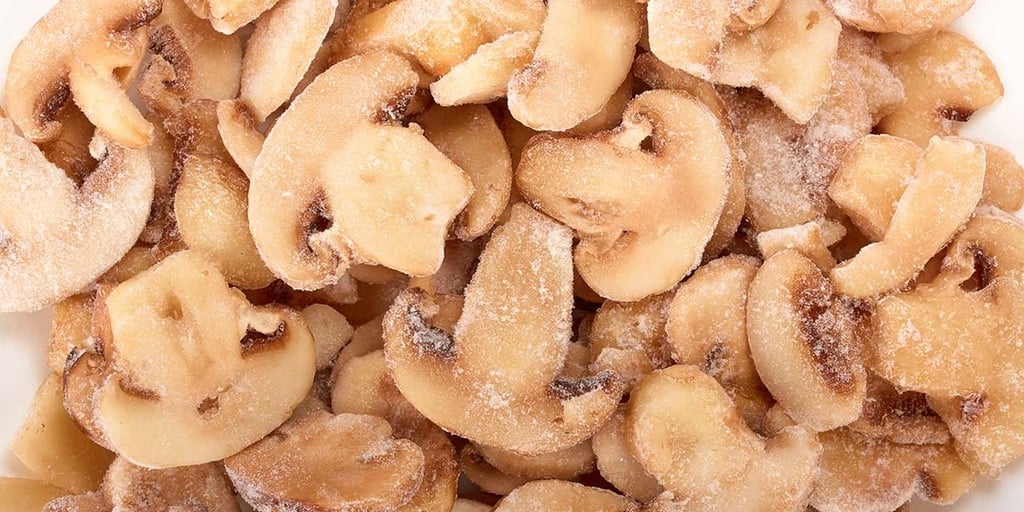
If you don’t want to use dried mushrooms, freezing them is another good alternative. Mushrooms will stay good for 10 to 12 months in the freezer.
Though the longer you keep them frozen, the more their flavor and texture properties will start to change.
You can freeze raw mushrooms. But it’s better to steam or sautee them first. They’ll retain a much better texture. Frozen raw mushrooms tend to be a bit mushy once you thaw them out.
I also recommend individually freezing mushrooms on a cookie tray before bagging them up. That way they’ll stay loose so you can take only as much as you need, and won’t end up with a solid frozen lump of mushrooms.
If you have leftover canned mushrooms that you don’t plan to use within a few days, you can also freeze them so they’ll last an extra 1 or 2 months.
For more detailed information on how to freeze mushrooms, check out my other article “Can You Freeze Mushrooms? Yes, Here’s How!“
Pickling Mushrooms

You can pickle mushrooms in the same way that you’d pickle a cucumber, beets, or other types of vegetables.
Boil them in a mixture of vinegar and water along with your desired spices, and then put them in a temperature-safe jar with an airtight lid.
Pickled mushrooms will keep in the fridge for about a month.
The downside is that they’ll have a strong briny vinegar taste, so they aren’t good for using in recipes and can mostly only be eaten as a side dish on their own.
How Can You Tell When Mushrooms Have Gone Bad?
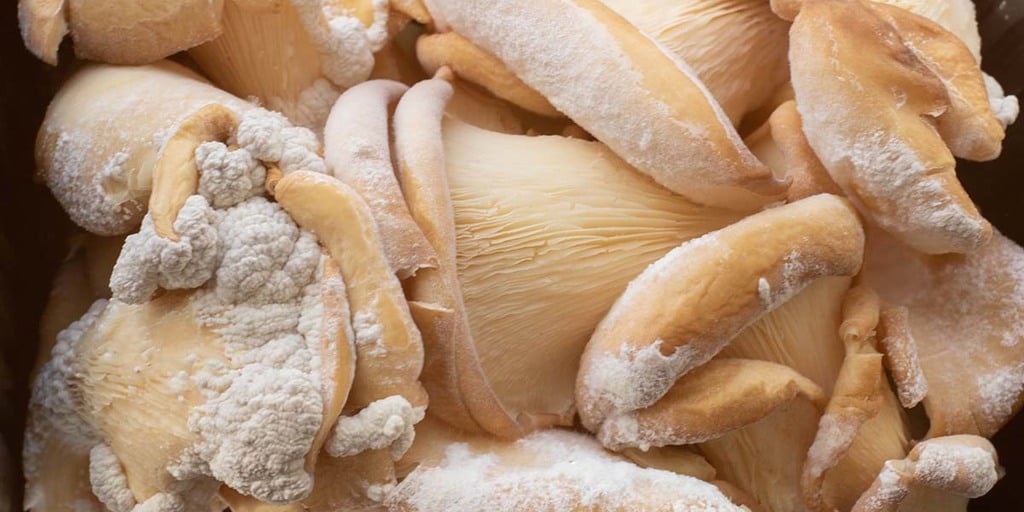
Mushrooms show some pretty clear signs once they start to go bad. So as long as you check before you eat them, you shouldn’t accidentally get sick from mushrooms that you thought were okay.
A Bad Smell
If your mushrooms have a rancid odor when you open the container, that’s a good sign that they’re already spoiled and shouldn’t be eaten.
Bad mushrooms can give off a variety of strange smells which can range from ammonia-like odors to fishy smells. Different bacteria on the mushrooms can cause different odors.
Fresh mushrooms should only have a mild earthy smell. So if you’ve got smelly mushrooms, they are most likely already too far gone to try and save.
Wrinkly Skin
Mushrooms are mostly water. So when they’re fresh, they should be plump and smooth. Wrinkles on your mushrooms means they’re starting to get a bit dehydrated.
They aren’t necessarily a sign that your mushrooms are already bad if there’s only minor wrinkling. But you should cook them right away if you want to use them before they spoil.
Once mushrooms start to get really shriveled up, they’re probably too far gone and should just be composted or thrown away.
Dark Spots
Mushrooms will start to develop dark spots when they begin to go bad. Again it doesn’t necessarily mean they’re too spoiled to eat if the spots are minor, but it’s a warning sign that they’re about to go bad.
Cook your mushrooms up within a day or two, or throw them away if you’re unsure.
In addition to dark spots, the mushrooms may start to turn a darker color as a whole as well. Try to pay attention to this when picking out mushrooms from the store as well.
Darker mushrooms will probably only have a few days left before they go bad, so don’t buy them unless you plan to use them right away.
Slimy Shrooms
When your mushrooms get to the point that their skin is slimy, they’re definitely too far gone to eat. This means they’ve started to rot and bacteria is already breaking them down.
Normally it takes mushrooms two weeks or more in the fridge to reach this point. It’s better to toss them at this point rather than risk getting sick. They probably won’t taste very good once they get to the slimy stage anyway.
If you’ve looked for all of these characteristics and you’re still not sure if your mushrooms are okay to eat or not, it’s best to throw them away. Better safe than sorry!
Related Questions
Q: What happens if you eat old mushrooms?
A: Eating spoiled mushrooms can have the same effect as eating any other food that has gone bad or developed mold.
You might get lucky and be fine, or you could experience symptoms ranging from an upset stomach to getting very ill with food poisoning.
Q: Do mushrooms go bad in the fridge?
A: Yes, mushrooms will still go bad in the fridge. Storing them there won’t make them last forever.
You should still aim to use them within a week, even if you refrigerate them. They can go bad just like any other fruit or vegetable kept in the fridge.
Q: Can you freeze mushrooms
A: Yes, mushrooms can be frozen. It’s best to cook them before you freeze them. This will help maintain a better texture. Raw frozen mushrooms are a bit mushy after they’re dethawed.
Q: Does one moldy mushroom ruin the rest?
A: If you see one moldy mushroom in a container, you should take it out right away to prevent it from spreading to the rest.
If the other mushrooms don’t show signs of mold, they should be okay to use, but should be cooked within a day or two.
The high heat of cooking them should kill any mold or bacteria. But it’s always better to throw the whole container out if you have any hesitation.
Q: Do you have to slice mushrooms?
A: Mushrooms can be cooked whole or cut into halves or quarters. Larger mushrooms like oyster and maitake can be torn into pieces.
Discover more about 20 most popular types of mushrooms you can cook too.
Don’t feel like you have to slice your mushrooms to cook them, feel free to get creative!
Find more answers here:
Conclusion
Fresh mushrooms should be refrigerated. They shouldn’t be expected to last more than a day sitting out at room temperature.
In the fridge, fresh mushrooms should last for about a week before they start to spoil. Storing them in a paper bag or poking some holes in a plastic container will prevent excess humidity and help them to last a bit longer.
Cooking your mushrooms will extend their freshness in the fridge by another three days or so. Here you can find 30 Of The Best Mushroom Recipe Ideas that worse to try cooking.
If you are vegan, check these 25 Of The Best Vegan Mushroom Recipes to learn more ways of cooking mushrooms.
If you don’t think you’ll be able to use all of your mushrooms within a week, you can make them last longer by freezing, dehydrating, canning, or pickling them. These are all best done with fresh mushrooms.
So if you think you’ll have leftover unused mushrooms, it’s better to preserve them sooner rather than waiting until the last minute.
You can tell if a mushroom has gone bad by looking for dark spots, wrinkly skin or a slimy texture, and a bad smell. If you suspect your mushrooms aren’t fresh enough to eat, it’s better to toss them instead of risk getting sick.
